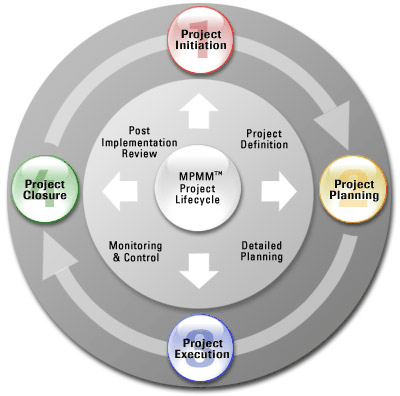Project Management

It's well known that a large percentage of projects fail to deliver the benefits expected by the business. In fact according to The Standish Group, more than 70% of projects fail to deliver on time, within budget and to specification. So why do so many projects fail to meet the customers' requirements? Poor sponsorship, lack of defined requirements, and miscommunication between the project team and stakeholders are some of the most common causes.
However the most frequent cause of project failure is the lack of adoption of a Project Management Methodology. Without using a methodology from the outset:
However the most frequent cause of project failure is the lack of adoption of a Project Management Methodology. Without using a methodology from the outset:
- Project Teams start building deliverables without defining the project's scope and objectives
- Project roles and responsibilities are unclear, and lines of communications are undefined
- There are no quality targets set, so it's difficult to know when deliverables are really finished
- The customer can never be certain of the project's progress or when it is likely to be complete
- Project Managers must attempt to manage change, risks and issues "on the fly".
Project management is a methodical approach to planning and guiding project processes from start to finish. According to the Project Management Institute, the processes are guided through all stages: initiation, planning, executing, controlling and closing.
We follow a combination of the PMBOK® and MPMM® project methodologies, in the execution of our projects.
We follow a combination of the PMBOK® and MPMM® project methodologies, in the execution of our projects.
It's no surprise that many projects are cancelled before they even reach the planning stage of the project. A best practice Project Management Methodology provides structured processes at the outset for initiating, planning, executing and closing projects. MPMM helps you define your project objectives, create comprehensive project plans and establish the processes required to monitor and control your projects effectively. By using this best practice methodology, we will:
- Reduce time spent completing project deliverables
- Decrease cost by saving time and effort to build deliverables
- Minimize change, risks and issues by defining your project properly before you begin
- Assure quality of deliverables, increasing your likely of meeting the customer's requirements
- Monitor and control the project more efficiently, especially during the Execution phase
- Manage suppliers more effectively with comprehensive supplier contracts
- Improve staff performance by clarifying roles, responsibilities and delivery expectations
- Increase the likelihood of overall project success.
Life Cycle
A Project lifecycle is defined as a series of phases undertaken to deliver a required project outcome. The Method123 Project Management Lifecycle (MPMM) consists of four phases, as depicted by the diagram to the left of this paragraph.
Project Initiation
To formally initiate a project, the team must first define the purpose and structure of the project. Defining the project's scope, purpose, objectives,deliverables,resources,timescales and structure gives the team a clear view of the boundaries within which they must deliver project outcomes to meet the customer's requirements. Setting a clear direction at the start is critical to its ultimate success.
Project Planning
The first step of the Planning phase is the creation of a detailed Project Plan. The Project Manager will refer to this plan throughout the project to monitor and control time, cost and quality - the three core tenets of Project Management. Furhter plans which will be created includes a Resource Plan, Financial Plan, Quality Plan, Risk Plan, Acceptance Plan, Procurement Plan, inclusive of the selection process. The Planning phase is undertakne in stages which allow for review to enable the Project Sponsor of Project Owner to assess the deliverables to date and approve the start of the Execution phase.
Project Execution
In this Phase the Project Team physically 'construct' each deliverable. While the deliverables are being 'built', the Project Manager monitors and controls the project delivery by undertaking: Time, Cost, Quality, Change, Risk, Issue, Procurement, Communication and Acceptance Management.
Project Closure
Closing a project formally involves a reasonable amount of work. First, a project closeure report is created to list all of the actions required to close the project. When the Project Sponsor/Owner has approved this report, the actions listed are completed to release the project resources, handover deliverables, close the Project office and inform all stakeholders that the project is now closed.
Between one and three months after the project has been closed, an independent party conducts a Post-Implementation Review to determine the project's overall success and to idnetify whether the business actually realized the benefits stated in the original Business Case. Any lessons learned are also documented for future projects.


